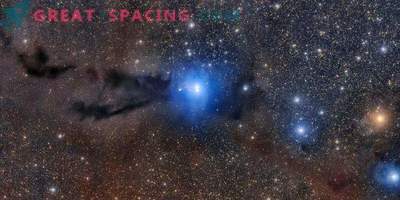
Researchers have recorded a rare variation in brightness in an emerging star. Flicker repeats with an interval of 18 months, which indicates the presence of a hidden planet. This study is important for understanding the creation of stars and planets. The survey was conducted on a Maxwell telescope.
The change in brightness in the star EC53 shows that something major breaks its gravitational pull. Re-darkening almost always indicates a rotation around the star of the planet.
Young stars appear in galactic regions, where there is a huge amount of molecular gas. In childhood, gas and dust create a dense haze centered around the object. Some materials from the cloud fall on the disk, where planets are formed. Haze interferes with observing the star in visible light, so it is difficult to consider the details of the development process.
Gravity attracts gas, and the star is gaining massiveness. In this process, a lot of energy is released, which warms up the surrounding cloud. One has to use hypersensitive telescopes oriented to submillimeter waves to calculate the brightness. Monthly observations of the EC53 helped to notice the anomalies of the light curves. Periodic changes were also observed at near infrared wavelengths. But the submillimeter survey helped to understand that the reason was the heating of the gas, and not a change in the clouds of the environment.
Deep understanding of stellar and planetary formations
In the next 3 years, the team of scientists will continue to monitor the EU53, and will also search for new young stars, demonstrating changes in growth, in order to understand exactly how stars and planets are created. The survey already has a dozen candidates. With the addition of ALMA power, you can get a new and unique insight into the details of the very process of nucleation and development.
The use of submillimeter waves is an unconventional method of observation and was made possible by the development of image processing technology, such as SCUBA-2. The Maxwell telescope is mounted on top of Maunaki (Hawaii), and is managed by the East Asian Observatory.











































